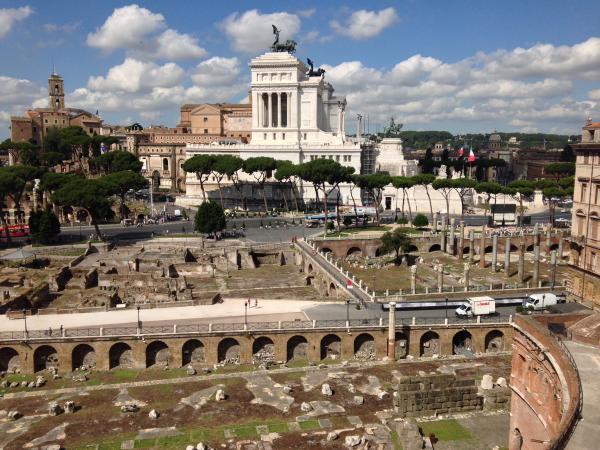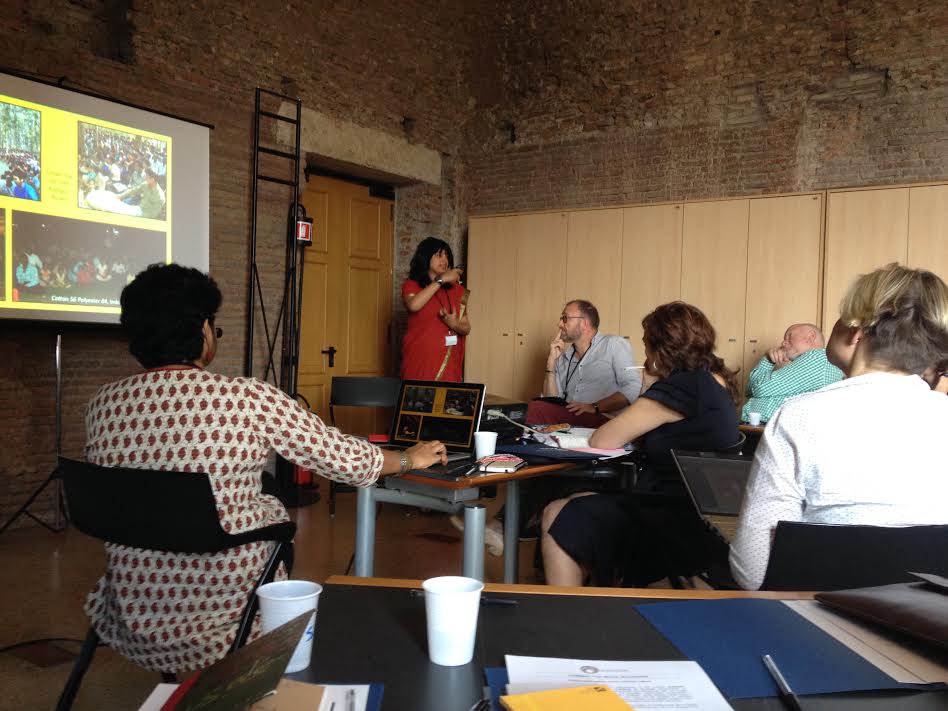LACMA’s expanded outreach to the community of Los Angeles attracted the attention of a research group based in Rome that had recently received funding from the European Union to develop a training program related to audience development. As a result, Sarah Jesse, associate vice president for education, Karen Satzman, director of youth and family programs, and I spent two days in Rome this past July participating in a workshop at the Museo dei Fori Imperiali.
The European Union’s Lifelong Learning Programme, Leonardo Da Vinci, is funding ADESTE, the acronym for Audience DEveloper Skills and Training in Europe, a 30-month project intended to define the occupational skills and competencies of an audience development/engagement professional and determine an innovate training program to help cultural institutions in Europe provide greater public access and realize fuller cultural participation.
Consisting of partners from six European countries, as well as associate partners from Europe, India, and the United States (LACMA), from higher education, independent and national research centers, audience development agencies, and cultural organizations, the group has been meeting since January 2013 to develop the training program. An ambitious understanding that involves disparate nations, agendas, and motivations, the project team established the following activities:
pooling the resources and expertise of partner organizations;
identifying the skills required of an effective audience developer;
mapping and collecting audience development best practice;
designing and testing formal, informal and innovative training methods for audience developers in line with the needs of the cultural labor market;
promoting cooperation and exchange between different stakeholders through a pan-European and cross-sectorial approach.
The meeting in Rome was an opportunity for the core group to learn from the two non-European Union partners, LACMA and the Indian Foundation for the Arts, and move the project to the next practical level of illuminating best practices and defining skills.
Our colleagues from India shared their grassroots efforts to develop and engage audiences around small theater-based workshops and artist residency spaces. Working with local communities, they found connections between the audiences’ daily lives and their goals and formed a common bond that solidified their work and benefited the community. With funding from The Indian Foundation for the Arts, these organizations, as well as local artists and educators, are given support to develop their projects, pursue their art forms, and build an audience for the arts in India.
LACMA was asked to present not just our institution's efforts in audience engagement but to glean best practices from our colleagues across the country. We distilled our research into case studies that focused on four institutions involved in innovative strategies for engaging audiences. They included the Institute of Contemporary Art, Boston, making contemporary art accessible for visitors; the Dallas Museum of Art, rewarding audience participation; The Denver Museum of Art, targeting the Latino community; and the Oakland Museum of California, instituting organizational change. For our LACMA presentation, we highlighted the institution’s efforts to remove real and perceived barriers to access, build relationships within communities, develop a cohesive and long-lasting cycle of engagement, offer a broad spectrum of programs to reach diverse audiences and learning styles, implement a visitor-centered approach for programs, provide onsite resources and orientation for nontraditional audiences, cultivate new audiences through other art forms, and acquire artworks and organize exhibitions that are accessible and relevant.
Following the two non-European presentations, the group brainstormed their next steps and conducted several workshops intended to identify potential stakeholders within the European countries and resources for creating job descriptions and the training program.
With our work behind us, we could enjoy the tour of Trajan’s Market, which houses a museum of Rome’s Imperial Forums on the grounds of the forum built by Emperor Trajan in the 2nd century and containing over 40,000 fragments excavated in the 20th century, many of which were on view outside the doors of our workshop space. The workshop concluded with a tour of the MAXXI National Museum of XXI Century Arts designed by Zaha Hadid to exhibit contemporary art and architecture and a chance to meet the directors who run the two facets of the institution.
Our colleagues in Rome who are spearheading the ADESTE project have several months of intense work ahead of them and we look forward to continuing to serve as advisors and a resource for their work, as well as learning about the final product. To learn more about the ADESTE project, you can visit www.adesteproject.eu.





